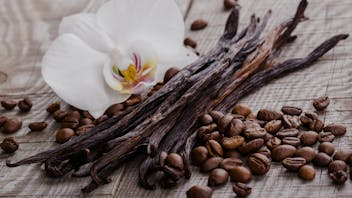Product Overview
Nagarmotha is an uncommon essential oil that we feel has not been adequately recognized in the aromatherapy and perfumery worlds. Ours has a rich, persistent, woody, earthy, deep, and somewhat peppery aroma with smoky notes of leather, displays great tenacity, and boasts rich, sweet-woody undertones and uniformity of odor throughout the drydown. The fragrant tuberous roots – known to French perfumers as souchet[1] – yield the essential oil of Nagarmotha; used as a substitute for Patchouli in perfumery, it adds a distinctive and interesting note to masculine or unisex perfumes.
The Cyperaceae family features many grasses and rushes, the most familiar of which is the ancient Cyperus papyrus, the source for our earliest writing paper. The intense and pine-y monoterpenes of this simple sedge are augmented by the unusual cyperotundone, a derivative of patchouli alcohol – hence the earthy depth.
The name Nagarmotha evolved from nāgaramustā[2], Sanskrit for a species of Cyperus[3], in this case C. scariosus, an aromatic sedge plant also known as Cyperus or Cypriol. The grass-like plants are usually found growing along the banks of ponds and streams and in wet copses and marshlands. The roots can either be dried and powdered for use in cosmetics or distilled for the essential oil.[4] Because Nagarmotha’s scent can create a peaceful ambience, it is highly suited for meditation practices.
The Cyperus genus – the plants of which were important incense ingredients in ancient times[5] – is not to be confused with Cypress (Cupressus sempervirens).
1 Genders, Roy. Scented Flora of the World, 1994, p. 177.
2 Ibid.
3 http://spokensanskrit.org/index.php?mode=3&script=hk&tran_input= nagaramusta&direct=se
4 Genders, Roy. Scented Flora of the World, 1994, p. 177.
5 Rhind, Jennifer Peace. Aromatherapeutic Blending – Essential Oils in Synergy, Jennifer Peace Rhind, 2016, p. 266.



